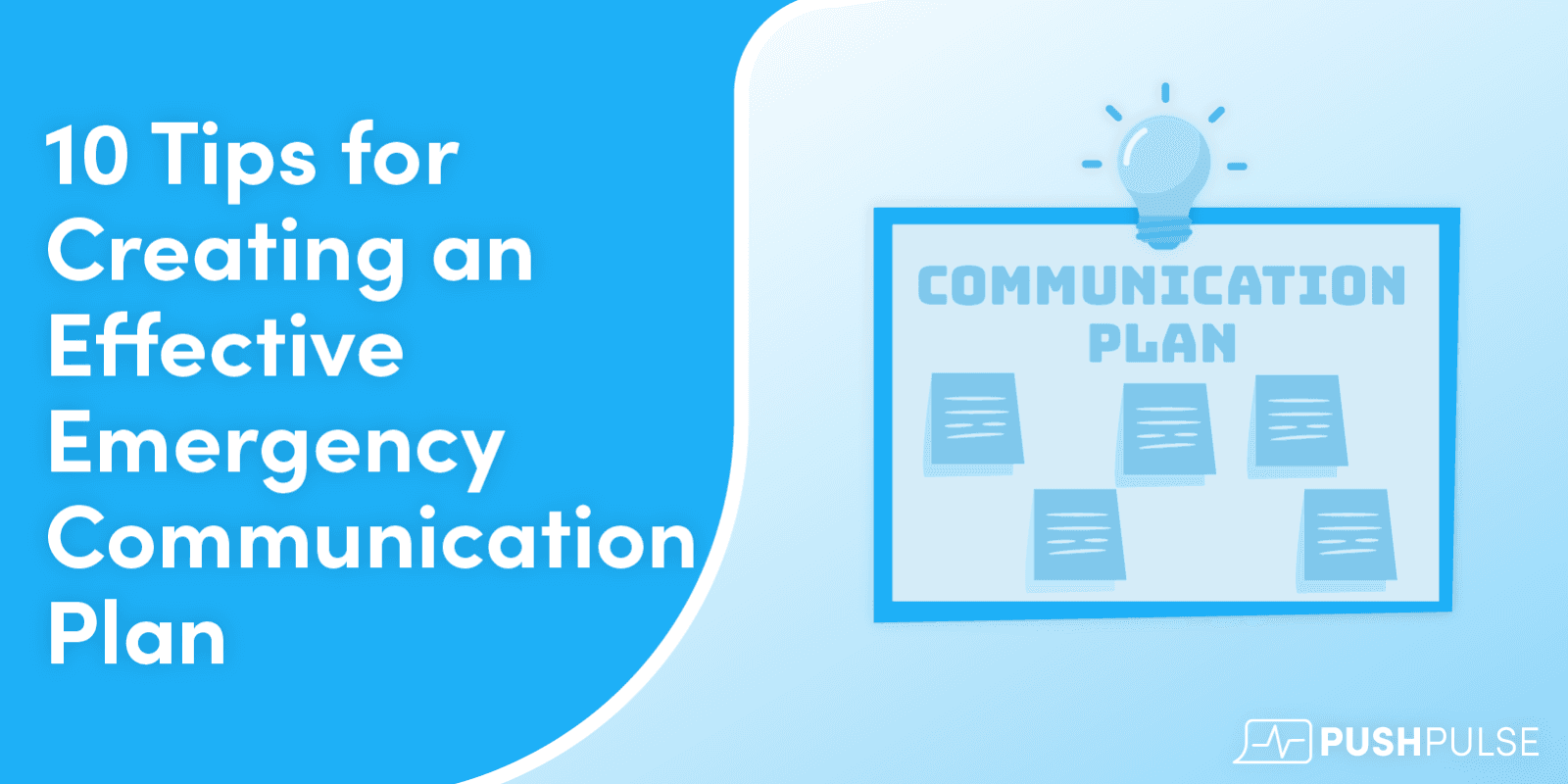10 Tips for Creating an Effective Emergency Communication Plan
In today's unpredictable world, businesses, organizations, and individuals must be prepared for the unexpected. Whether it's a natural disaster, a cyberattack, a public health crisis, or any other unforeseen event, having a well-thought-out emergency communication plan in place is essential. Such a plan can make the difference between chaos and control, between panic and a measured response. Here, we'll explore ten crucial tips for creating an effective emergency communication plan to safeguard your team, customers, and community.
1. Start with a Clear Purpose and Objectives
Before diving into the details of your emergency communication plan, it's essential to establish a clear purpose and set of objectives. What are you trying to achieve with this plan? Consider the potential emergencies your organization might face and define specific goals, such as addressing an active threat, ensuring the safety of individuals, minimizing downtime, maintaining customer trust, or complying with legal requirements. These objectives will guide your planning efforts and help you stay focused during a crisis.
2. Identify Key Stakeholders
Identify and prioritize your key stakeholders – the individuals, groups, or organizations that will be most affected by your emergency communication plan. These stakeholders may include staff, security personnel, customers, suppliers, regulatory agencies, local authorities, and the media. Understanding their needs and concerns will enable you to tailor your communication strategies accordingly.
3. Develop a Chain of Command
In the midst of a crisis, clear lines of authority and communication are vital. Establish a well-defined chain of command that outlines who is responsible for making critical decisions and who is in charge of disseminating information. Ensure that roles and responsibilities are clearly defined, and designate backup personnel in case key individuals are unavailable.
4. Establish Communication Protocols
Define communication protocols that outline how information will be gathered, verified, and disseminated during an emergency. Consider the channels you will use, such as email, phone calls, text messages, social media, and public announcements. Ensure that you have redundancies in place in case one communication channel fails. Additionally, establish a timeline for updates to keep stakeholders informed as the situation evolves. Tools like PushPulse can send alerts via text, phone call, email, push notification, and even integrate with digital signage.
5. Create Templates and Messaging
Prepare a set of pre-approved communication templates and messaging for different types of emergencies. These templates should include general information about the situation, instructions for stakeholders, and contact details for relevant personnel. Having pre-written messages ready to go will save valuable time during a crisis and help ensure that your communication remains clear and consistent. With PushPulse you can create notification templates for a variety of potential incidents that can be sent to specific groups at the touch of a button.
6. Implement a Notification System
Invest in an emergency notification system that can quickly reach all relevant stakeholders. Systems like PushPulse often allow for mass communication via text messages, email, phone calls, and mobile apps. The ability to send targeted messages to specific groups of stakeholders, such as employees or customers in a particular location, is invaluable for tailoring your communication to the situation at hand.
7. Training and Drills
A well-prepared team is more likely to respond effectively during a crisis. Provide regular training and conduct emergency drills to ensure that all employees understand their roles and responsibilities. Simulating various emergency scenarios will help your team practice their communication skills, identify weaknesses in the plan, and make necessary adjustments.
8. Monitor and Gather Feedback
After each emergency or crisis event, take the time to evaluate the effectiveness of your communication plan. Did it meet its objectives? Were there any breakdowns in communication? Gather feedback from your team, stakeholders, and customers to identify areas for improvement. Use this feedback to update and enhance your plan regularly.
9. Stay Informed and Adaptable
The world is constantly changing, and new risks and challenges emerge regularly. Stay informed about potential threats and adapt your emergency communication plan accordingly. This may involve revising templates, updating contact information, or incorporating lessons learned from past crises. A plan that remains static is less likely to be effective when faced with evolving circumstances.
10. Foster a Culture of Preparedness
Finally, create a culture of preparedness within your organization. Encourage individuals to take personal responsibility for their safety and the safety of their colleagues. Provide resources and information on emergency preparedness and encourage open communication about potential risks. A proactive and informed team is an invaluable asset when it comes to implementing your emergency communication plan.
Conclusion
An effective emergency communication plan is a cornerstone of crisis management for any organization. By following these ten tips, you can create a robust plan that safeguards your team, customers, and community during times of uncertainty. Remember that the key to success lies in preparation, clear communication, and adaptability.
PushPulse is a critical communications platform developed specifically to help organizations modernize the way they share important alerts and notifications. Our software and apps enable the sharing of critical communications across various channels, including digital signage, email, SMS, voice calls, and push notifications in real-time.
Sign up for a demo now and see how PushPulse helps keep people safe, informed, and connected. Want to try it out for yourself? Start a free trial today, no credit card required!
Try PushPulse for free
Upgrading your emergency response strategy is easier than you think. Start sending alerts in minutes.
